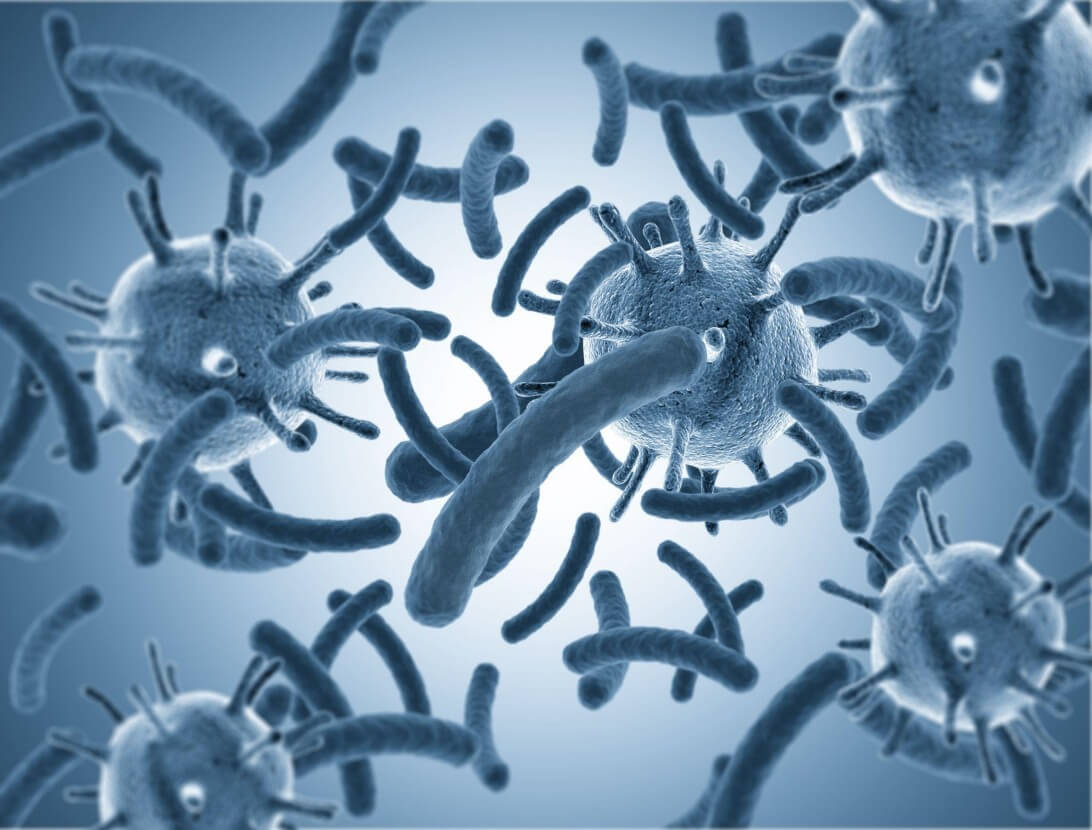Highlights
- Bacteria are single-cell organisms, while viruses are much tinier microbes that can infect even bacteria.
- Viral and bacterial infections often produce similar symptoms.
- Doctors can use urine, mucus, or blood tests to determine whether an infection is viral or bacterial.
- Some diseases are viral, and others are bacterial.
- Antibiotics will not treat a viral infection.
- BidRx can help you find the lowest price for antibiotics and antivirals.
Bacterial and viral infections are similar in many ways, and it may be difficult to tell them apart. Bacterial infections respond to antibiotic treatments. To treat a viral infection, you need antiviral medication. Here, we look at the differences between viral and bacterial infections and how you can prevent them. We also detail how you can find the lowest price for antibiotic and antiviral medications.
The Differences Between Bacteria and Viruses
Bacteria and viruses are both microbes. That’s where their similarities stop, however.
Bacteria
Bacteria are single-cell organisms that are present everywhere. Billions of them live inside the human body, and they can survive in the harshest conditions everywhere on the planet. According to archeological records, bacteria have been around for at least 3.5 billion years. Most bacteria have well-defined cell membranes that separate and insulate their cellular fluid from the environment. Bacteria can reproduce without the need to infect other cells.
Bacteria are mostly harmless to humans, and some of them are beneficial. They help us digest our food, protect us from disease, and assist in various other bodily functions. We use them to prepare food and beverages and enjoy other perks that bacteria make possible.
A tiny percentage of bacteria can make us ill.
Viruses
Viruses are much smaller organisms than bacteria. They are also much less complex and cannot reproduce without first infecting and “reprogramming” a cell. Viruses can even infect some bacteria.
Consisting of a protein coating or lipid (fat) envelope and a genome carrying its core genetic material, a virus is an intracellular parasite. It infects cells and multiplies inside its host, causing illness and sometimes death.
Being smaller and residing inside cells makes viruses more difficult to kill and viral diseases more difficult to treat than bacterial ailments.
Viruses are less friendly toward the human body than bacteria. Most of them cause diseases.
Bacterial and Viral Infection Symptoms
A doctor’s top priority when dealing with a disease is to establish whether it’s bacterial or viral.
Despite being radically different, bacteria and viruses can cause similar symptoms and diseases. Meningitis, diarrhea, and pneumonia are all diseases that can be viral or bacterial.
We have a range of powerful antibiotics that can treat many bacterial infections. The improper use of these drugs has allowed the emergence of some antibiotic-resistant bacteria strains.
Treating a viral infection with antibiotics is an instance of improper drug use. Antibiotics do not work for viral infections; for viruses, you need antiviral medication.
Doctors know that diseases like urinary tract infections, strep throat, whooping cough (pertussis), tuberculosis, Lyme disease, and ear infections are bacterial. They don’t have to dig deeper to determine their origin. These diseases respond well to antibiotic treatments.
The common flu, bronchitis, many types of cough, AIDS, COVID, warts, measles, and chickenpox are viral diseases. Treating these with antibiotics does not help and contributes to antibiotic resistance.
Causes and Risk Factors
Viral and bacterial infections spread from one person to another. Viruses and bacteria can also spread through insect bites.
Common forms of transmission of both bacterial and viral infections include:
- Coughing
- Coming into contact with the bodily fluids of an infected person
- Touching contaminated surfaces
- Mother-to-child transmission
- Insect and animal bites
- Traveling to an epidemic-stricken area
- Approaching infected people
How Doctors Diagnose Bacterial and Viral Infections
Responsible doctors do not prescribe treatments before they know whether the disease they want to treat is viral or bacterial. With diseases that can be either, they run tests.
The diagnostic process goes like this:
- Physical examination. Your doctor looks at your throat or other ailing body areas and seeks visible signs of infection. Examining body parts by palpation may also be part of the physical examination.
- History of symptoms. To have a full picture of your condition, your doctor will ask you to detail your symptoms.
- Travel history. Your recent travel history may give your doctors valuable clues about possible viral infections you may have acquired.
- Current epidemics. Epidemics can infect many people in an area. If there is an ongoing epidemic where you live, the odds are you may be one of its victims.
- Mucus, urine, blood, or other tests. If they cannot establish whether your disease is viral or bacterial, doctors will order mucus, blood, urine, or other tests to ascertain the nature of your illness.

Mucus, urine, or blood tests help doctors diagnose your infection
Doctors can identify some diseases by their symptoms, like chickenpox or measles. A urinary tract infection may be more difficult to diagnose and will likely require a urine test.
These tests can give your doctors an accurate glimpse into the nature of your disease. The type of bacterial infection tells doctors what antibiotics to use for optimal outcomes.
Bacterial Infection Treatment
The body can fight off many infections on its own. If your doctors identify a bacterial infection, they will only give you antibiotics if the infection is severe. The liberal use of antibiotics can lead to antibiotic resistance, a dangerous adaptation that renders bacteria immune to the effects of antibiotics.
Bacterial diseases respond well to antibiotics, and we have many antibiotic variants to treat a diverse range of diseases. Researchers continue to develop new antibiotics. Some of these can even fight bacteria resistant to older antibiotics.
Viral Infection Treatment
Treating viral diseases is a taller order. For some specific viruses, such as HIV and herpes simplex virus (HPV), we have dedicated antiviral drugs. For these conditions, doctors will prescribe the available medications.
For many other viral diseases, we have no dedicated drugs and solutions. The standard treatment method for these diseases is to:
- Manage the symptoms. Keep the body hydrated and nourished. Taking something for cough can improve symptoms.
- Address the fever. Acetaminophen (Tylenol, or paracetamol in Europe) can relieve a fever resulting from viral infections.
- Stop viral reproduction. If available, doctors will prescribe antiviral drugs that can stop the virus in its tracks.
Infection Prevention
The best way to prevent bacterial or viral infection is to avoid exposure, practice good hand washing, and get all recommended vaccinations.
Vaccines can prevent infection, but if you are already infected, you need antibiotics or antiviral drugs. Some of these medications can be expensive. BidRx can help you find the best price for antibiotics and antivirals.
Find the Lowest Price for Antibiotics and Antivirals

With BidRx, you can have pharmacies bid on your prescription to give you the lowest available price.
Here’s how:
- Log on to BidRx.com.
- Create an account.
- Find your antibiotics and antiviral medicines on our medication page.
- Create your bid.
- Pick up your medications locally or have them delivered to your home.
Finding the best price for all of your medications is easy. Create a bid today!
